How to Prevent Ligament Damage in Outdoor Riding
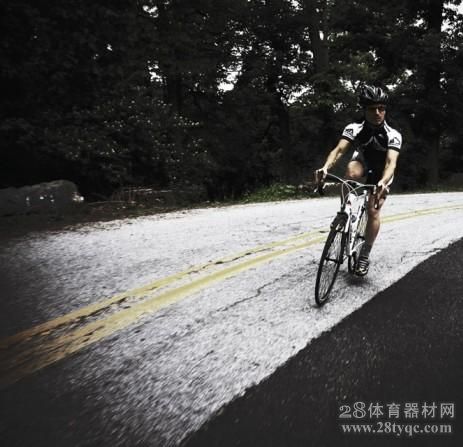
Riding sports, like running, swimming, playing basketball, and aerobics, can speed up breathing, enhance vomiting, and be a healthy aerobic exercise. In the spare time after work stops, or on weekends and holidays, you can ride your beloved mountain or bicycle on a road bike. Of course, this is a joy to both exercise and relieve stress.
When stepping on a bicycle, we mainly rely on the strength of our legs to climb the slopes and control the speed. Our ligaments also work at different levels when we go uphill and downhill. If you are a novice rider or an older rider, you should pay attention to lowering the level of athletics in the case of weaker special forces, because the intensity of the treading may be higher. Sports injuries are the most likely causes of ligament injuries.
Ligament injury is also the highest incidence of sports injuries for athletes in many different projects. Ligaments are mainly tissues that connect two bones. It is a flexible, fiber-like, dense connective tissue. It attaches to the movable part of the skeleton but limits its range of motion to avoid damage. When the human body changes its weight-bearing activity or position, muscles, ligaments, fascia, synovial membrane, etc. are involved. When the joint is twisted or the muscle suddenly contracts, a small number of fibers can be broken and the small joints can be micro-motion-staggered to form a strain.
In general, what causes the ligament damage caused by riding?
(1) Quality factors: Some riders who have not experienced strong cycling and riders who are still in the entry period of riding sports may not be aware of their physical conditions and choose unsuitable riding strength. The result is a higher incidence of damage.
(2) Reasons for quantity: The main cause of ligament injury is the transition fatigue caused by long riding time, excessive exercise volume, and high exercise frequency. Excessive cycling is due to the fact that the load received by riders is too large and the body is not fully restored.
There are two types of ligament injuries that are most likely to occur during riding: Infraorbital ligament injuries; Ligament injuries to the knee joint
Infraorbital ligament injuries occur most often in the lateral thighs during riding. Because we were happy when we were riding
Huan speeds up the pace faster, so many riders prefer to use the cradles to start the way with an acute force. This type of pedaling may cause strains on the outside of the thigh muscles. 7 large lateral muscles , The rectus femoris muscle, the vastus lateralis muscle, the femoral medial muscle, the biceps femoris, the semitendinosus, the semimembrane muscle) will exert force at the same time. Among them, the vastus lateralis muscle is the muscle with the largest lateral force and is most likely to cause strain. Muscles. So before we can ride, we can do some stretching exercises in the legs first to allow the muscles to exercise first, and then to fully strengthen the elasticity of the muscles and then perform an acute force to make it less likely to cause strain.
Ligament injury of the knee joint is mainly caused by strained knee muscles caused by too long time of exercise stamping, excessive exercise volume, and high stepping rate. It is mainly caused by the injury of the medial and lateral collateral ligaments of the knee joints, because the load received when riding is too large, so that the body is not fully recovered. We need to rest after the last ride, so that after the body is fully restored, we will ride again. Especially for cyclists who like to travel long distances, they must pay attention to rest during long-term pedaling, so that the muscles are relaxed and the fatigue of the joints is reduced.
How do we deal with ligament injuries accidentally in outdoor riding?
When the joint ligament is damaged, there will be local swelling, accompanied by pain, tenderness, subcutaneous hemorrhage, and the appearance of bruising. Early correct treatment of joint ligament injury is very important. Because the ligament tissue is not easy to regenerate and recover, if it is treated improperly or misdiagnosed and turns into a chronic disease, it may leave a dysfunction, and later it is easy to sprain again.
When acute ligamentous injury occurs, exercise should be stopped immediately to reduce bleeding. As far as possible in the shortest possible time with cold water to hurt the site or use ice (can buy frozen mineral water) cold injury site to achieve the purpose of hemostasis. Then bandages (clothes available for use in emergencies) were used to compress the lesions and prevent swelling. After 24 to 48 hours of waiting, the internal bleeding of the injury site has stopped. Now warm towelling or massage can be used to reduce swelling and promote blood absorption. When using warm towels, the temperature should not be too high, and the time should not be too long. Should not be too heavy, so as not to exacerbate exudation, edema or rebleeding. In order to promote the recovery of joint function, some low-intensity activities are recommended when there is no pain. (I personally recommend the use of Sanqi Huoxue Paste, affixed to the affected area to promote blood circulation, promote soft tissue regeneration. After the basic recovery, the strength of the joint muscles should be strengthened to promote the recovery of the injured site more activity). If the ligament is completely broken or suspected of having a concomitant fracture, it must be dialed 120 and sent to the hospital for treatment immediately after the pressure dressing!
Prevention of ligament stretching during riding (Exhibit)
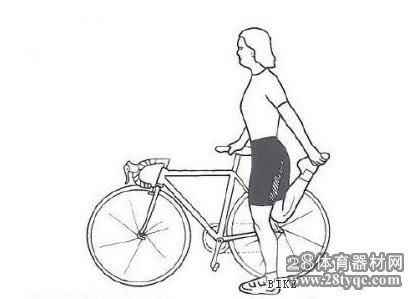
Crane vertical
1. Smooth your body against the car or wall and grab your right foot from behind with your left hand.
2. Gently pull your hands away from your hips and stretch them statically.
3. Keep your hand in place and stand straight - don't bend over.
4. To contract muscles, push with your feet and start lighter.
5. Repeat the above action on the other leg.
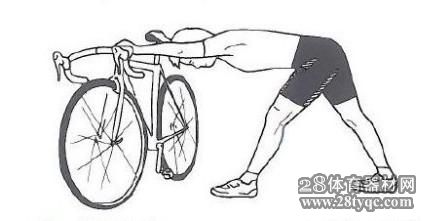
Triangle
1. Bend down on a bicycle or a wall.
2. Straighten your legs forward and leave your front feet 18 inches from the car.
3. The other foot is directly behind. The farther away from the hind foot, the greater the strength of the stretch.
4. Move your body's center of gravity forward and press down on the upper body. You should feel that the front legs are stretched.
5. To contract the muscles, retract the front legs.
6. Repeat the above motion on the other leg.
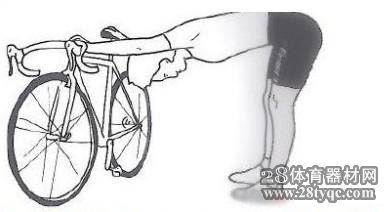
Back style
1. Hold a bicycle or railing to maintain balance and move your body's center of gravity toward your arms.
2. Stretch the dorsi muscula as much as possible by letting the head rest between the straight arms.
3. To retract muscles, lower your hand.
4. Use your bike to balance your body, squat and keep your feet in the same place
5. Keep your hips as close as possible to your ankles. Hold this position for 30 seconds (this position does not contract).
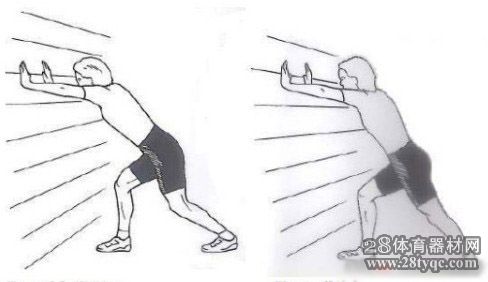
Push wall
1. Stretch straight back, the front leg receives the center of gravity, leaning against the wall.
2. Keep your hind legs flat and keep your toes forward.
3. The more forward your hips, the greater the tensile strength of your calf.
4. To shrink the calf, push the wall as if pushing it away with your feet.
5. Repeat for the other leg.
Round Cotton Pads,Stitched Pure Cotton Round,Customized Cotton Rounds,Pure Cotton Pads
COTTONWHISPER (TAIZHOU) DAILY PRODUCTS CO.,LTD , https://www.cottonwhipershop.com